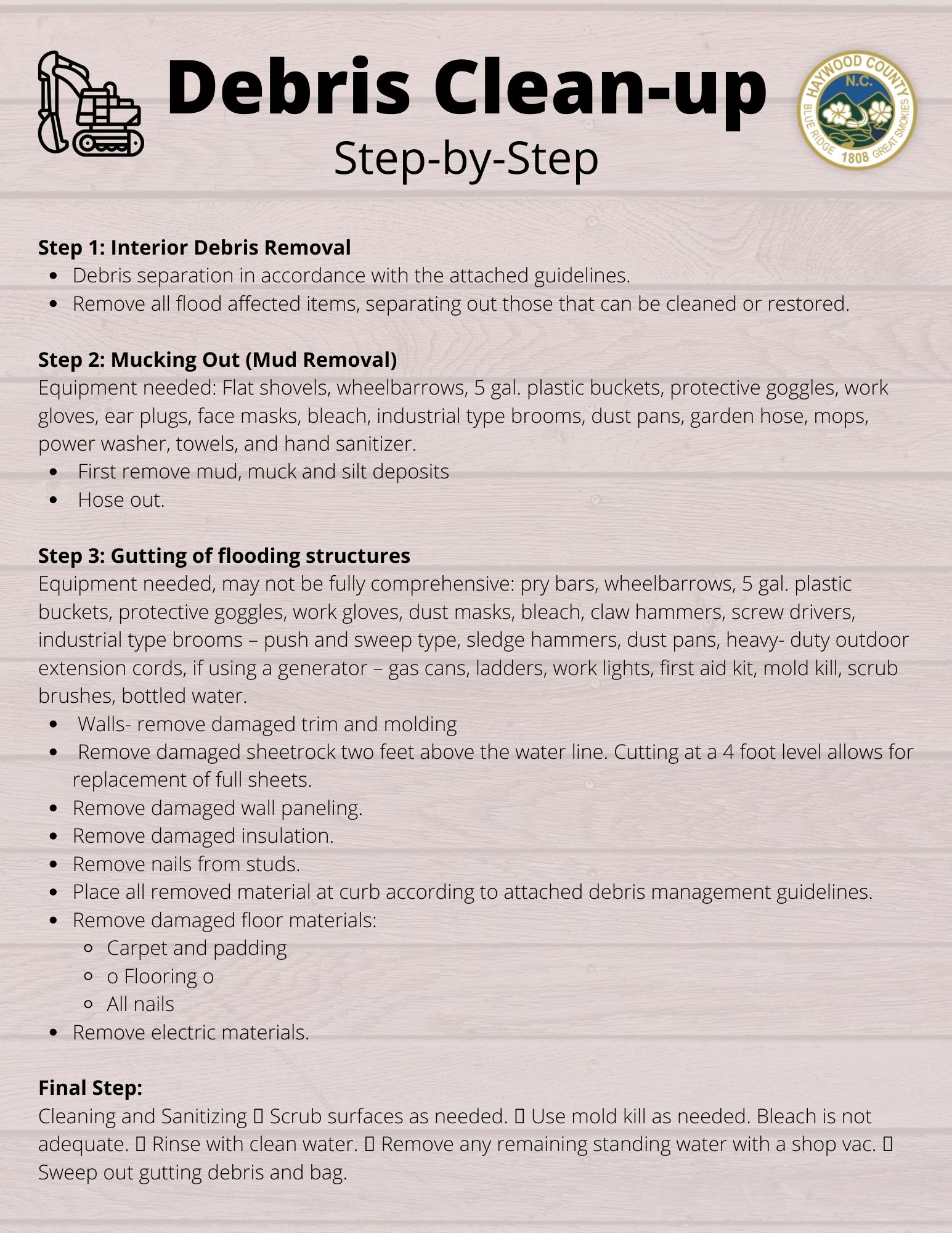Heavy equipment contractors will be arriving soon to collect and remove storm debris piles.
In the meantime…..
Tips for clearing your own debris
DOs
Call Your Insurance Provider First
Your content goes here. Edit or remove this text inline or in the module Content settings. You can also style every aspect of this content in the module Design settings and even apply custom CSS to this text in the module Advanced settings.
Take Pictures
Photograph everything from every angle possible before moving or clearing debris. These photos will be necessary to prove your claim and seek reimbursement later.
Sort Debris by Type
Sort debris into the following categories:
- Electronics
- Large Appliances
- Hazardous Waste
- Vegetative Debris
- Construction Debris
- Household Garbage
DON’Ts
Do NOT Take Storm Debris to Landfill
Storm debris will be picked up and disposed of by teams contracted specifically for this purpose. In most cases you will not need to haul debris yourself.
Do NOT Pile Debris in the Road
Do not block the road with debris. Pile it as neatly as possible NEAR the road, but NOT in it.
DON'T Throw Out Everything
Do NOT include the following items in storm debris piles:
- Tires
- Dead Animals
- Hazardous Waste, like paint cans
Debris Clean-Up
Step-By-Step
Step 1: Interior Debris Removal
- Debris separation in accordance with the attached guidelines.
- Remove all flood-affected items, separating out those that can be cleaned or restored.
Step 2: Mucking Out (Mud Removal)
Equipment needed: Flat shovels, wheelbarrows, 5 gal. plastic buckets, protective goggles, work gloves, ear plugs, face masks, bleach, industrial-type brooms, dust pans, garden hose, mops, power washer, towels, and hand sanitizer.
- First remove mud, muck and silt deposits
- Hose out.
Step 3: Gutting of flooding structures
Equipment needed, may not be fully comprehensive: pry bars, wheelbarrows, 5 gal. plastic buckets, protective goggles, work gloves, dust masks, bleach, claw hammers, screw drivers, industrial type brooms – push and sweep type, sledge hammers, dust pans, heavy-duty outdoor extension cords, if using a generator – gas cans, ladders, work lights, first aid kit, mold kill, scrub brushes, bottled water.
- Walls- remove damaged trim and molding
- Remove damaged sheetrock two feet above the water line. Cutting at a 4-foot level allows for replacement of full sheets.
- Remove damaged wall paneling.
- Remove damaged insulation.
- Remove nails from studs.
- Place all removed material at the curb according to debris management guidelines.
- Remove damaged floor materials:
- Carpet and padding
- Flooring
- All nails
- Remove electric materials.
Final Step:
Cleaning and Sanitizing
- Scrub surfaces as needed.
- Use mold kill as needed. Bleach is not adequate.
- Rinse with clean water.
- Remove any remaining standing water with a shop vac.
- Sweep out gutting debris and bag.



Returning Home After a Flood



Salvaging Damaged Family Treasures


